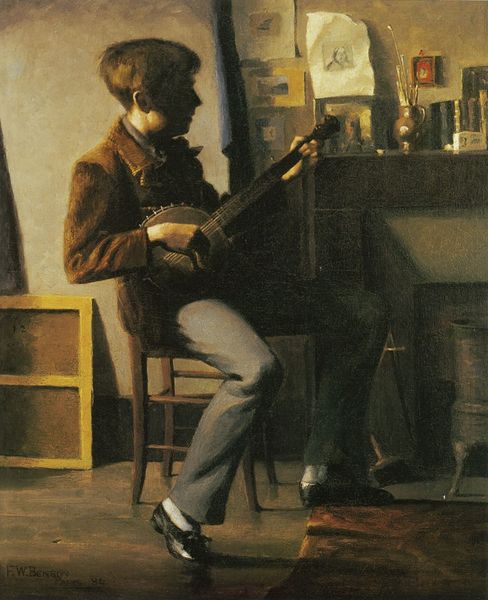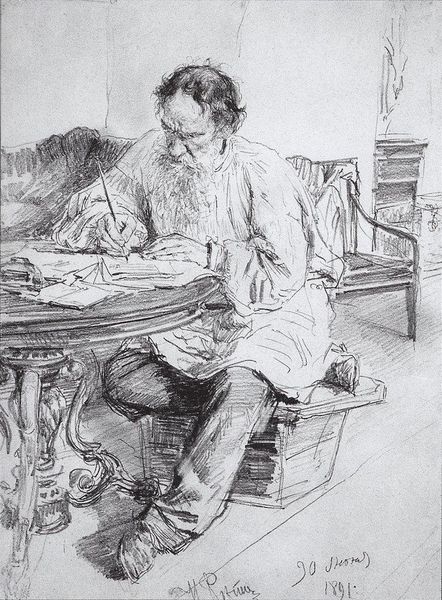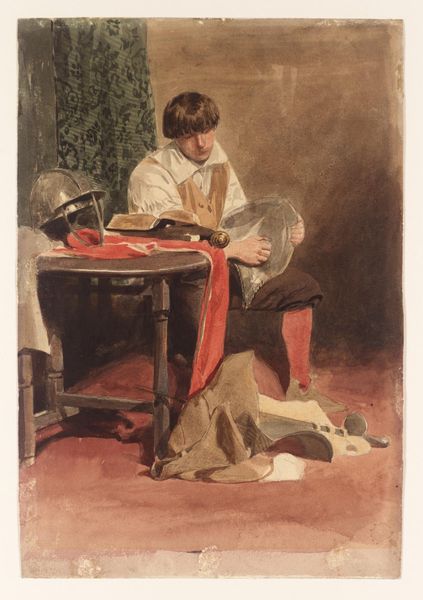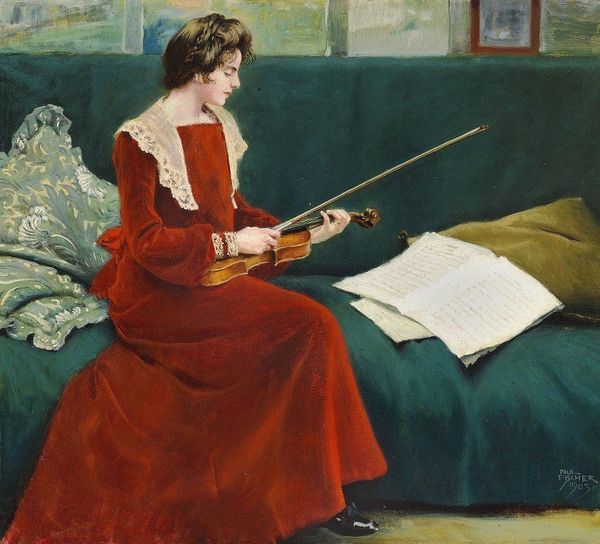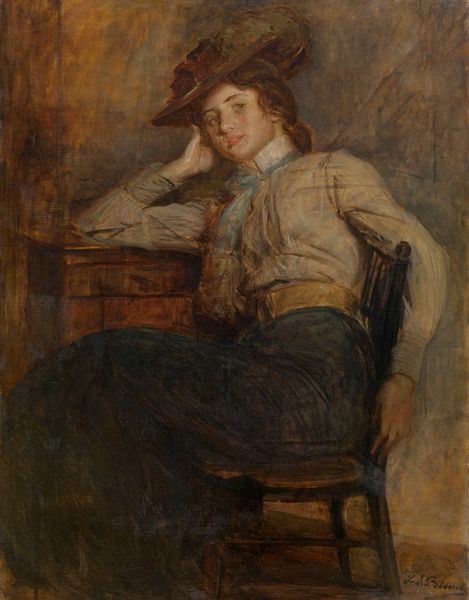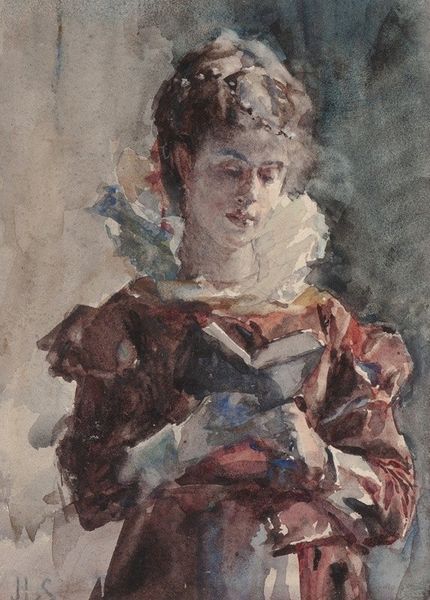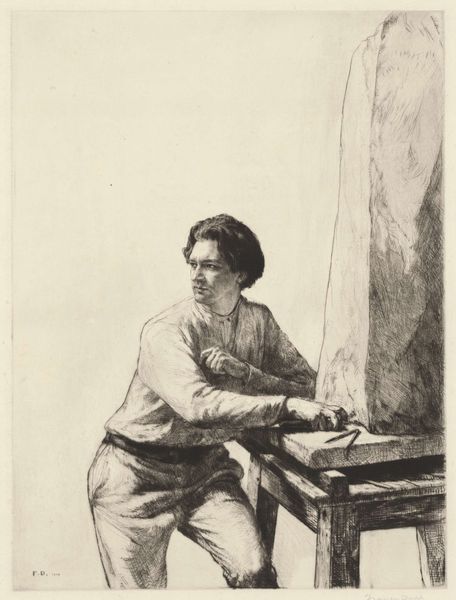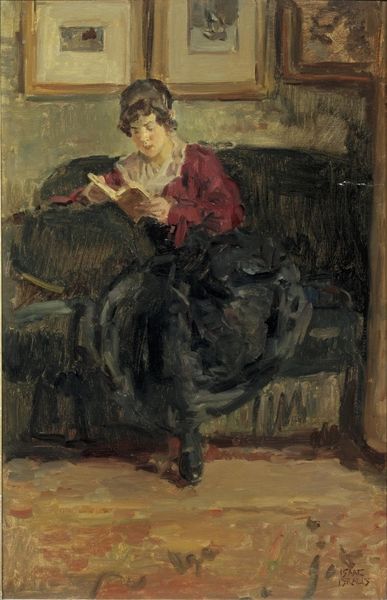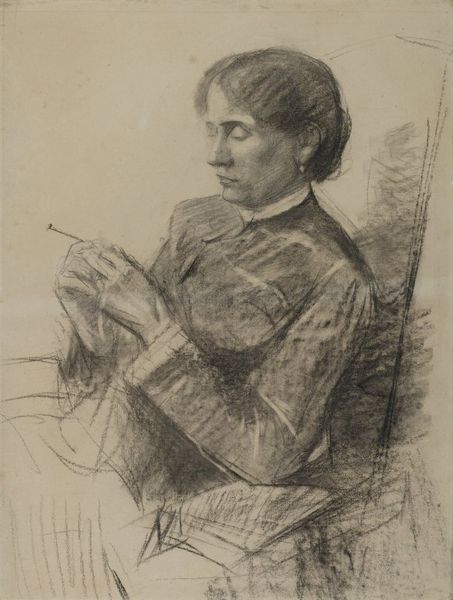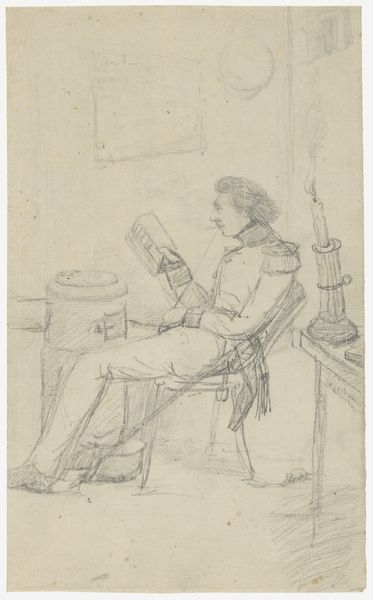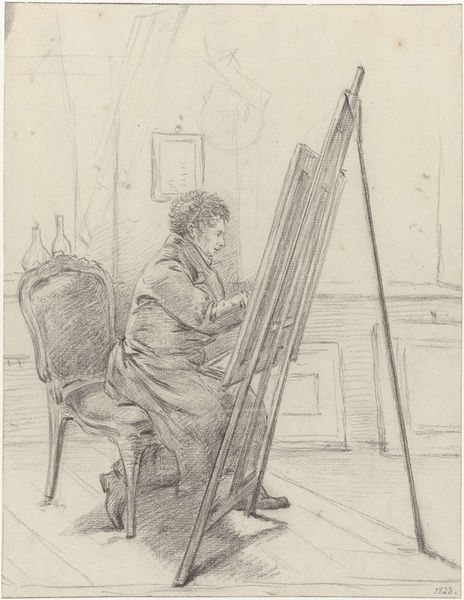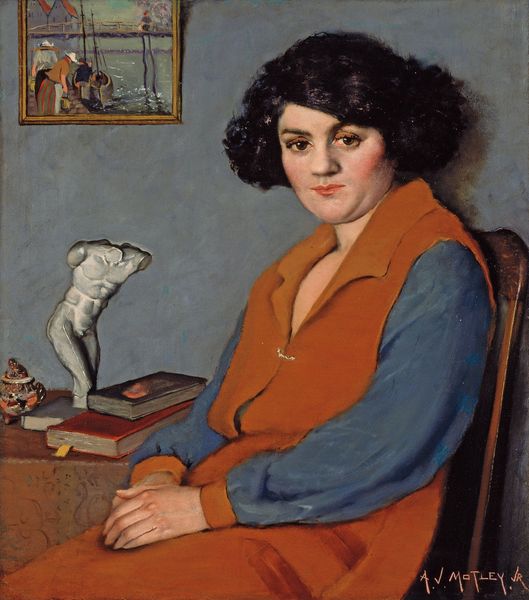
Dimensions: 35 x 24.5 cm
Copyright: Public domain
Editor: We're looking at "Violinist," a watercolor painting by Vladimir Makovsky, created in 1908. The colors are quite muted and the overall impression is that of a fleeting moment, capturing the violinist in what appears to be a casual setting. What stands out to you as you look at this piece? Curator: What strikes me is how this seemingly simple genre painting operates within the broader social and political context of Russia at the beginning of the 20th century. Makovsky was known for his realist depictions of everyday life, but his works often carried a subtle commentary on social issues. What do you notice about the environment he is in? Does it resemble a grand hall? A concert stage? Editor: No, not at all! He seems to be in quite a modest room, perhaps even his own home. And it seems like he's not in performance mode. Curator: Exactly. By portraying the violinist in such a mundane setting, Makovsky humanizes him, perhaps suggesting the accessibility of art to the common person, which was a subtle, yet significant, statement in a society grappling with class divisions and the role of art in public life. Considering that social realist pieces are often rejected by salon, do you feel like pieces like this open opportunities for marginalized artists to express themselves, or are they catering to the tastes of academies? Editor: That's a thought-provoking angle. Maybe he’s bridging the gap between the elite art world and everyday experience. Curator: Precisely. It invites us to consider how images function in shaping our understanding of social realities and the changing role of the artist. This particular era was ripe for debate, how did you feel seeing Makovsky portrayed his character with familiar, human qualities? Editor: That gives me a whole new perspective on it. It is not just a nice painting but it's saying something about the role of art and the artist in society. Curator: Yes, art doesn't exist in a vacuum. Understanding its historical and social context can unlock layers of meaning we might otherwise miss.
Comments
No comments
Be the first to comment and join the conversation on the ultimate creative platform.
